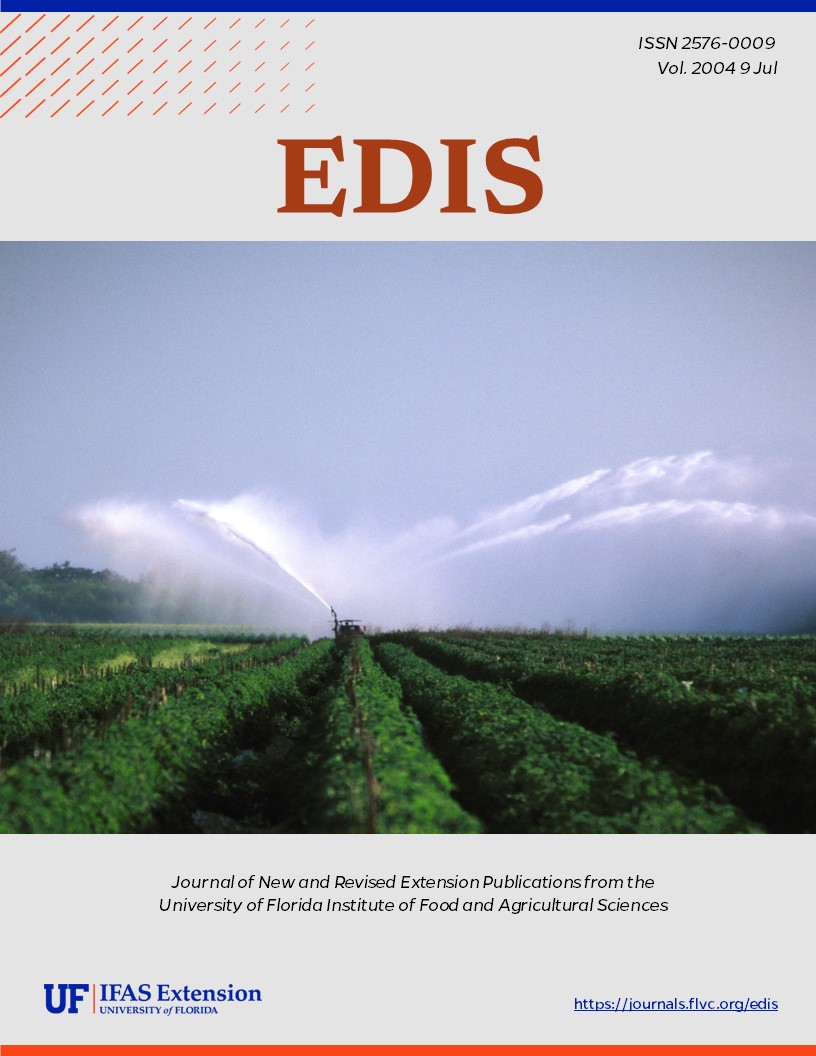Abstract
Insects that attack prickly pear cacti, Opuntia spp., in North America have been under investigation for a century. The primary purpose of this research has been to determine which insects have the most promise as biocontrol agents where cacti are severe weed problems. In Australia, for example, over 30,000,000 acres of pasture land were rendered useless because of dense stands of exotic prickly pear cacti. One of the native American cactus insects that showed early promise as a control agent was the coreid bug, Chelinidea vittiger Uhler. DeVol and Goeden (1973) discussed the value of this species in biological weed control and reported that it was ineffective in controlling prickly pears in Australia and Santa Cruz Island, California. In most areas of North America prickly pears are not a problem because a complex of insects keeps them under control. Chelinidea vittiger is considered a minor component of that complex. In Florida and the other southeastern states, the only Chelinidea present is C. vittiger aequoris McAtee. This document is EENY-208 (originally published as DPI Entomology Circular 149), one of a series of Featured Creatures from the Entomology and
Nematology Department, Florida Cooperative Extension Service, Institute of Food and Agricultural Sciences, University of Florida. Published: May 2001. Revised: August 2003.
References
Blatchley WS. 1926. Heteroptera or true bugs of Eastern North America, with especial reference to the faunas of Indiana and Florida. Nature Publishing Company, Indianapolis. 1116 p. https://doi.org/10.5962/bhl.title.6871
DeVol JE, Goeden RD. 1973. Biology of Chelinidea vittiger with notes on its host- plant relationships and value in biological weed control. Environmental Entomology 2: 231-240. https://doi.org/10.1093/ee/2.2.231
Hamlin JC. 1924. A review of the genus Chelinidea (Hemiptera-Heteroptera) with biological data. Annals of the Entomological Socienty of America Publishing Company. 25: 89-120.
Hunter WD, Pratt FC, Mitchell JD. 1912. The principal cactus insects of the United States. U.S.D.A. Bureau of Entomology Bulletin 113: 1-71. https://doi.org/10.5962/bhl.title.64983
Hussey RF. 1952. Food plants and new records for some Hemiptera in Florida. Florida Entomolgist 35: 117-118. https://doi.org/10.2307/3491938
Mann J. 1969. Cactus-feeding insects and mites. U.S. National Museum Bulletin. 256: 1-158. https://doi.org/10.5479/si.03629236.256.1
McAtee WL. 1919. Notes on Nearctic Heteroptera. Bulletin of the Brooklyn Entomological Society 14: 8-15.
Torre-Bueno de la JR. 1941. A synopsis of the Hemiptera-Heteroptera of America north of Mexico. Part II. Families Coreidae, Alydidae, Corizidae, Neididae, Pyrrhocoridae and Thaumastotheriidae. Entomological Americana 21: 41-122.
Unless otherwise specified, articles published in the EDIS journal after January 1, 2024 are licensed under a Creative Commons Attribution-NonCommercial-NoDerivs 4.0 International (CC BY-NC-ND 4.0) license.

